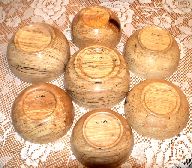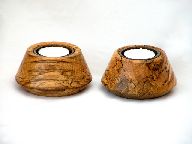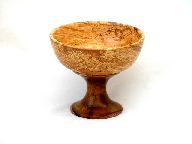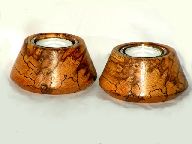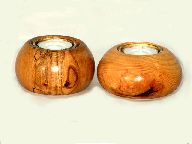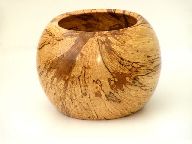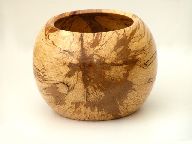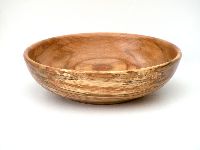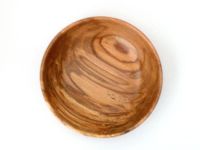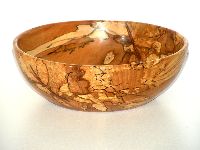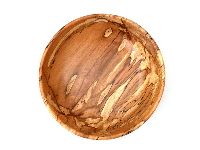johnny.t.":39cbq99o said:
.......
What do you use for sanding(tool, grits etc)?
Hi
Johnny, don't believe everything you see in the pictures, especially with the spalted bits, look a little closer and there are usually a few blemishes
*.
As with most turners I have managed to reduce the amount of sanding needed as my turning tool use has improved, and in particular with the soft spalted wood develope a shear cutting technique that does not tear the fibres so much.
Never the less as far as using abrasives are concerned I will admit to resorting to starting with 80 grit if I can't get a tool cut to work.
As far as abrasive types used I have four sets and I can't tell you which of the first three I am most likely to start with.
1. Cloth backed Oxide abrasive, J-Flex (good on dry wood but clogs fairly easily on wet) and Rhino Brand (Preferred, I think Hegner may now stock this but can only see velcro backed on their site)
2. Abranet (excellent for feedback on heat generated, it hurts :lol: ) Works very well with wet wood be it from normal moisture or sealers.
3. Grip-A-Disc Rotary Sanding Discs.
4. Nyweb
So dependant on how well the tool work has gone I tend to just reach for whichever seems the most appropriate for the piece, I guess it's just a feeling for what's required based on having turned a few pieces now.
If something isn't working or clogging too much I switch around products, and I'll admit to doing a final shaping or blending.
Finish sanding is always done with the Grip-A Disc system (friction driven, hardly ever drill driven) to remove any radial score marks that I have generated by misuse of the hand abrasive.
I rarely go below 320 grit on the wood types I use, I do have 400 and 600 grit to hand for the occasional use on harder close grained woods.
Nyweb is used to denib and blend any sealer build up that comes from poor application
*.
The bulk of my output is just finished with Woodwax22, my main customers preferred finish, melamine lacquer, finishing oil or food safe oil all get the occasional outing dependant on any special usage requirements for the piece.
On the spalted pieces I invariably soak well with diluted sealer as and when it seems appropriate during the final turning and throughout the sanding process to avoid causing cavities in the softer parts.
*I'm hoping to improve in these areas in the near future by developing a buffing routine, invariably there are radial streaks visible in lathe mounted final polishing.
James B":39cbq99o said:
.........All the pieces on this thread look superb, could i ask what your finishing technique is for these pieces.
James, having said all the above if you want to get down to my minimalist approach to the bulk of my output have a look at this
Old Thread what you see of finishing (sealer and wax) takes all of 2 minutes. If you get the sealer too thick, I.E. applied undiluted then be careful in the burnishing stage or you will get build up streaks, if this happens blend down with a little thinners on a rag or Nyweb.





